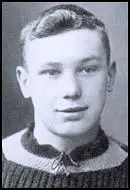Clem Stephenson

Clement (Clem) Stephenson was born in County Durham on 6th February 1890. An inside-forward he played local football for West Stanley (1908) and Durham City (1909) before joining Aston Villa in March 1910.
Stephenson made his debut in the 1910-11 season but did not establish himself in the first-team until the following season. He developed a good partnership with Joe Bache. Tony Matthews argues in his book, Who's Who of Aston Villa: "An expert schemer, he passed the ball with fine judgement, was no mean goalscorer, could shoot with both feet, had good pace and was never afraid to rough it with the burly defenders."
In the 1912-13 season Aston Villa finished as runners-up to Sunderland. The club scored 86 goals with the main contributors being Harry Hampton (25), Harold Halse (21) but Stephenson scored 14 that season.
Aston Villa beat Derby County (3-1), West Ham United (5-0), Crystal Palace (5-0), Bradford City (5-0), Oldham (1-1) to reach the FA Cup Final against Sunderland in 1913. Over 120,000 saw Aston Villa win the game 1-0.
Clem Stephenson's career was interrupted by the First World War. In the first season after the war (1919-1920) Stephenson was Aston Villa's top scorer with 27 goals in 39 games. He won his second cup winners' medal when Aston Villa beat Huddersfield Town 1-0 in April 1920.
Herbert Chapman, the new manager of Huddersfield Town, told his directors that: "You have talented, mostly young, players - they need a general to lead them. I know the man and I think we can get him." Chapman was thinking of Stephenson, who he had met when he guested for Leeds City during the First World War.
In March 1921 Stephenson was transferred to Huddersfield Town for £4,000. During his time at Aston Villa he scored 96 goals in 216 appearances. As Adam Ward and Jeremy Griffin pointed out in The Essential Aston Villa: "A dispute over his continued residency in Newcastle had precipitated the transfer, although there was also a growing feeling that he was past his best."
Herbert Chapman, the manager of Huddersfield Town, brought out the best in Stephenson. Huddersfield reached the 1922 FA Cup Final against Preston North End. Huddersfield scored the only goal of the game, a penalty conceded by Tommy Hamilton. It was awarded when Hamilton tripped Huddersfield's outside-left Billy Smith. Hamilton admitted the offence but claimed it was outside the penalty area. Stephenson therefore became the first player in the 20th century to win three winners’ medals in the FA Cup.
Stephenson won his first and only international cap for England against Wales on 3rd March, 1924. He was also made captain of Huddersfield Town, who went on to win the First Division title in 1923-24, 1924-25 and 1925-26. Herbert Chapman wrote to Stephenson "I want to thank you personally for your play, your wholehearted efforts both on and off the field. I have never had such confidence in any captain of a team I have been associated with."
By the time he retired from playing Stephenson had scored 42 goals in 248 games for the club. In May 1929, Stephenson was appointed manager of Huddersfield Town. The team never recaptured the form achieved under Herbert Chapman. They did reach the FA Cup Final on two occasions. Huddersfield lost to Arsenal (2-0) in 1930 and Preston North End (1-0) in 1938.
Stephenson left the club during the Second World War (May, 1942). He later worked as a caterer in the town.
Clem Stephenson died in Huddersfield on 24th October 1961.
